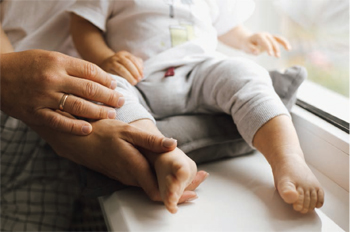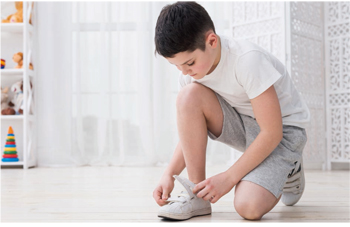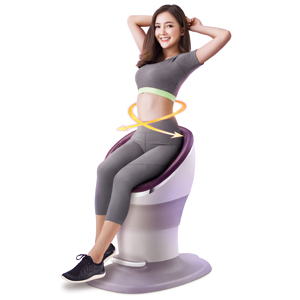04.2020 Life Guide
On the development of children's lower limbs and flatfoot
Far Eastern Memorial Hospital child development center / Li yingyao physical therapist


What is flatfoot?
The arches of human feet include: medial longitudinal arch, lateral longitudinal arch and transverse arch, while the flat feet of children (commonly known as "duck's feet") are mostly the collapse of medial longitudinal arch. Clinically, the foot part is neutral, pronation and supination. A complete evaluation should be made on the foot, lower leg, knee, thighbone, pelvis and even spine.
The development period of children's foot arch is 3-8 years old. Before 3 years old, the foot arch is usually not obvious (because there is thick fat tissue and the muscle of plantar ligament has not developed completely). Therefore, when parents ask about flatfoot related issues between 3-3 years old and 3.5 years old, they usually suggest parents to observe first.

When children first learn to walk, the distance between their legs is slightly wide, the step distance is short, and the step frequency is fast, about one and a half to two years old, they will develop a heel contact, four years old will develop arm swing, and the gait will be mature only when they are about 7 to 8 years old.
Stages of lower extremity development
The development of children's lower limbs is often accompanied by pendulum phenomenon. At the birth of a baby, the lower limbs tend to have O-shaped legs, mainly because of the relationship between posture in the fetus. After learning to stand and walk, the lower limbs will gradually become X-shaped legs (the most obvious at the age of 2-4). Then the lower extremities began to straighten, nearly normal at the age of 6-8. During this development period, parents can pay more attention. If the child is easy to fall or walk a little, he will feel tired or sore, it is recommended to assess and follow up.
Causes of flatfoot
* congenital: including congenital ligament over relaxation, low muscle tone or heredity, etc.
* day after tomorrow: including overweight, daily living habits or lack of exercise.
The lower beam is not right and the upper beam is crooked
When the flat foot is more serious, it is often accompanied by the change of calcaneus position, or even thumb valgus. Sometimes it will affect upward, resulting in tibia internal rotation, femur internal rotation, pelvis forward tilt, functional long and short feet, and even affect the spine upward, resulting in scoliosis.
Clinical examination includes the appearance, joint angle, muscle soft tissue, gait of the whole lower limb, and even the wearing condition of children's shoes. The appearance should be checked by the front side and the back side. The back side should see the relative position of the middle line of the calcaneus and the lower leg (observe whether there is foot valgus); the front side should observe whether there is thumb valgus, and whether the toes are relatively inward or outward.
The joint angle should be checked from the foot up to the pelvis to see if the knee has O-shaped legs or X-shaped legs (flat feet are often accompanied by X-shaped legs), if the hip joint is relatively inward or outward, if the pelvis is forward or backward, or if there are functional long and short feet, etc.
The more accurate gait inspection mode is to walk on the treadmill, and then take a picture of the walking gait, so as to judge the foot condition when walking. The internal eight gait is also one of the reasons that children are prone to fall. The main reasons include thigh bone rotation, tibia rotation and foot inward. If children are suspected of internal eight gait, they can also go to the hospital for evaluation. Clinically, we can also use the condition of shoe wear to assist judgment, and observe whether the inner and outer sides of the sole are worn, as well as the direction of the mouth. Combined with the above examination results, appropriate insole or treatment should be given.
What should I do if I have flat feet?
When it is suspected that children's feet are relatively flat, they should not be given insoles immediately. Instead, it should be determined that the cause of flat feet comes from feet, X-shaped legs, daily living habits (kneeling and sitting), or obesity. Then appropriate intervention methods should be given according to the cause.
If it is necessary to improve the insole, the selection and wearing of insole are relatively important. Children's insoles are mainly intervened by the principle of arch and hind foot control. It is recommended that professional therapists evaluate the collapse of children's feet and tailor the insoles. If it is found that the foot is accompanied by calcaneus valgus, it is necessary to timely add the gasket and give suggestions on choosing shoes, so as to truly solve the problem of children.

The insole must be placed in the shoes with enough coverage and support to play the best role. Therefore, it is very important to choose shoes and avoid too soft cloth shoes or sandals. When choosing shoes, the last should be wide enough to ensure that the toes will not be squeezed, and the heel should be hard enough to support the stability of the heel.
Sports are very important
The development of children's feet varies with age. When giving insoles, the development of feet and the situation of daily life should be considered. The main purpose of wearing insoles is to let the lower limbs move in a more normal position, and proper movement intervention is a more effective way to induce the development of children's foot arch, so that the foot is more exposed to the natural environment, and only when it moves in the natural environment, can the foot arch have a better chance of development. It is suggested that we can exercise on the floor with different texture, such as grass, sand, etc., and appropriately carry out stretching exercise, muscle strength and endurance training.




















